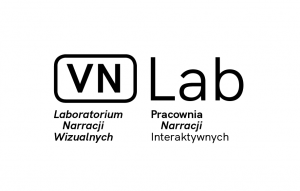Amazon A–Z: Workers Network
Just as Amazon is a global company, so too must protests by trade unionists or activists aimed at its operations have a global dimension. Amazon's Polish workers noticed this shortly after the first fulfillment centers opened in the country. When a (yet another) strike broke out in 2015 in Bad Hersfeld, Germany, workers at the warehouse near Poznań, Poland, were informed about mandatory overtime. Some of them, aware of the protest across the western border, organized themselves and massively (in a group of about a hundred people) slowed down work in one of the departments, which is key for timely shipment of orders.
Also in 2015, an international coalition of Amazon Workers International was formed to coordinate protests and actions of employees of the e-commerce giant across Europe and the United States. The group was formed on the initiative of Polish, German and French workers, and its first “cross-border” meeting was held in September 2015 in Poznań. Since then, workers from Italy, Spain, Slovakia or the US have joined AWI, and its meetings have been held regularly in more countries.
AWI is part of an even broader alliance by the name of Make Amazon Pay. Under its umbrella, it brings together not only warehouse workers but also members of Amazon Employees for Climate Justice (which brings together mainly office and IT workers from the corporation who demand environmentally friendly actions), urban activists from Berlin vs. Amazon (who oppose the construction of an Amazon office building in Berlin), and a whole range of more or less official organizations associated with the world of work, ecology, and social justice.
The first protests under the hashtag #MakeAmazonPay took place in Germany in November 2017 on the occasion of Black Friday, and already a year later they spread across Europe. Pickets, blockades and protests in 2021 have already taken place literally all over the world – from the US, to Brazil, to European countries and India. It is the broad coalition of grassroots organizations that makes this possible, but also the growing awareness of a community of interests among employees at different levels and in different departments.
In Amazon's approach to business, both its horizontal and vertical development is important. In business nomenclature, this means, respectively, growth by entering more separate industries, or by integrating the entire process in a given industry under one company. Amazon is doing both, and so are the employees trying to do the same. Just think of the IT workers affiliated with Amazon Employees for Climate Justice who expressed solidarity with the harsh working conditions of warehouse workers during the COVID-19 outbreak. For two such IT workers, Emily Cunningham and Maren Costa, this ended in immediate firing from the company (ruled illegal by the US National Labor Relations Board). On the other hand, during the March 2021 strike in Italy, warehouse workers managed to win not only the favour of parcel suppliers working under Amazon's logo, but also trade unionists from outside companies. A sign was to hang on the fence in front of the warehouse: “From Piacenza to Alabama – One Big Union.”



